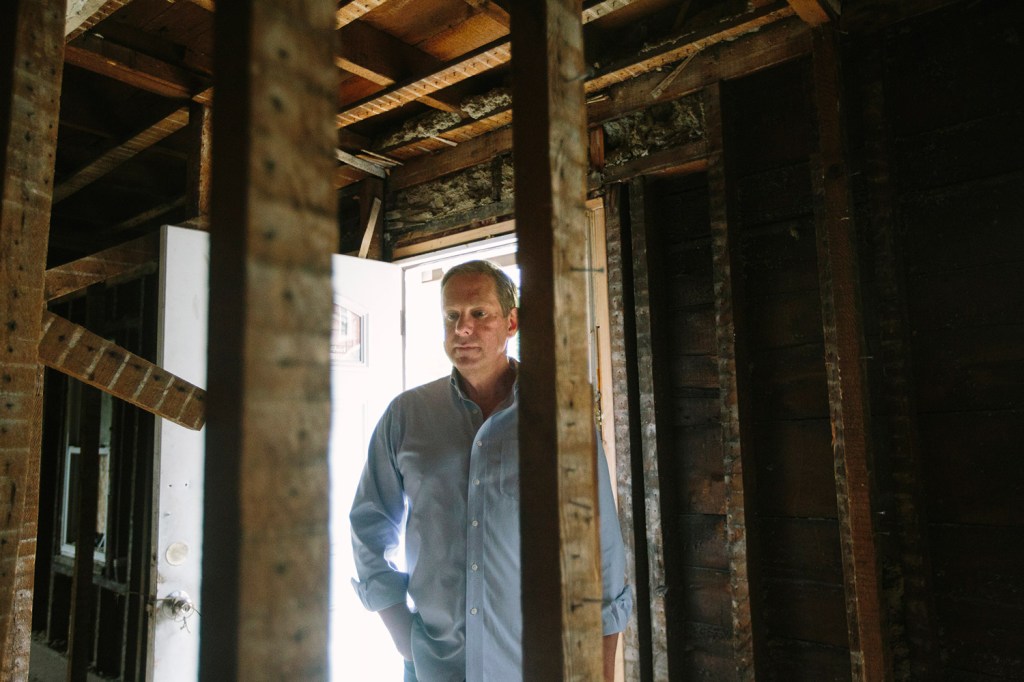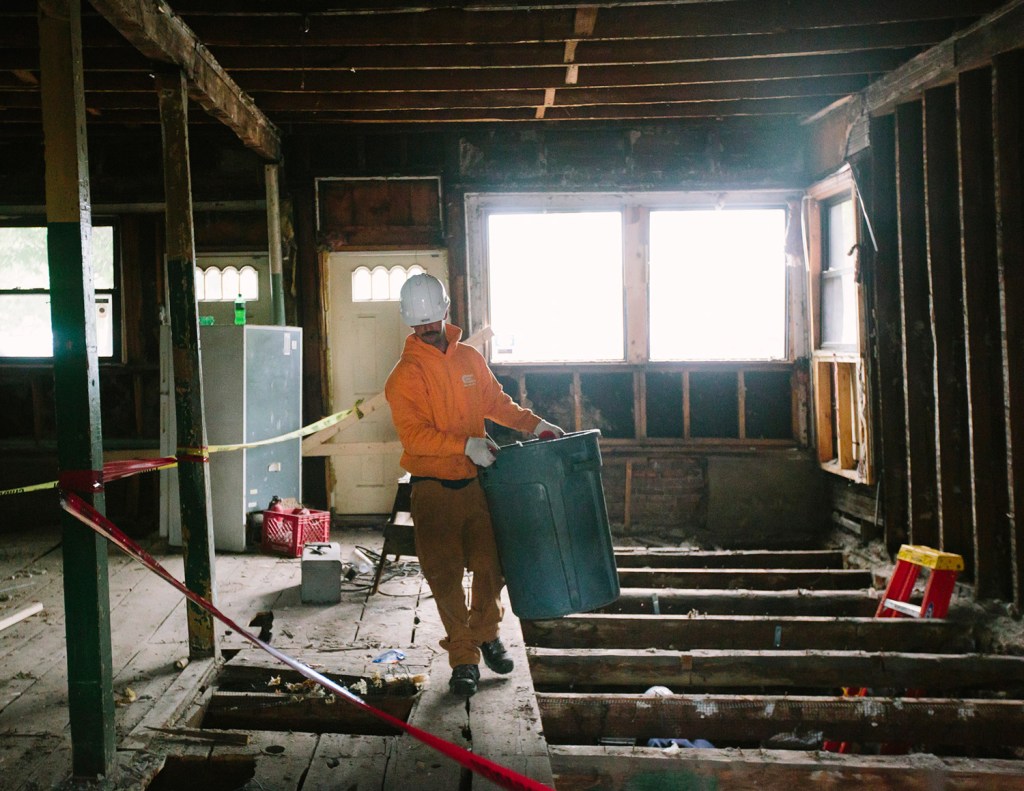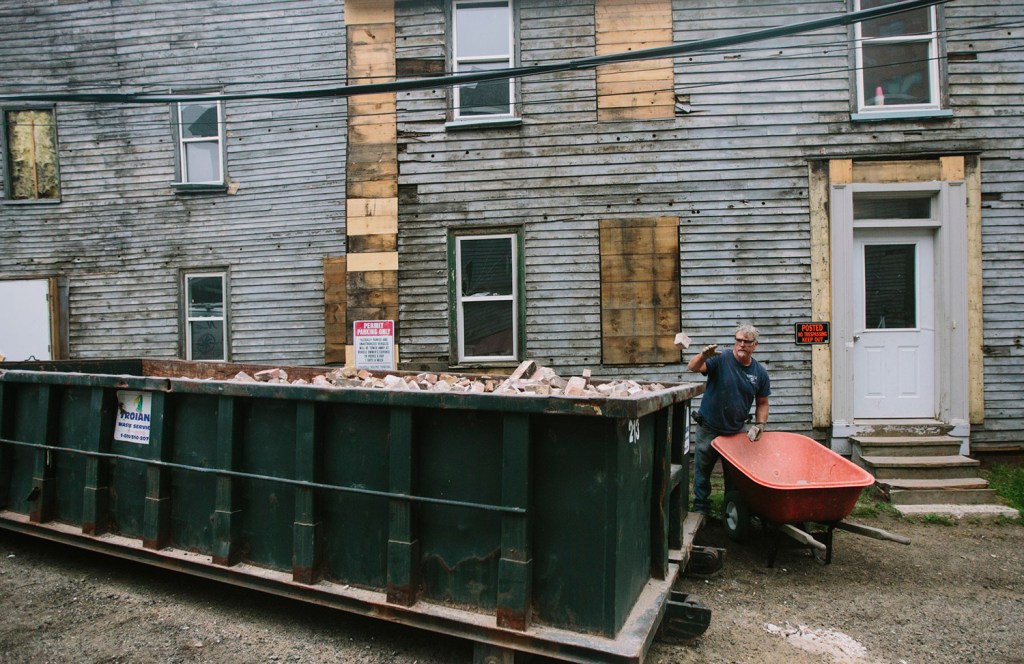C
randall Toothaker motioned to the back corner of a building at Cumberland Avenue and Wilmot Street. Tenants told him they regularly saw drugs being sold there. It’s across from where he once opened a storage shed and startled a man injecting heroin into his arm.
Drug activity and noise complaints were prompting tenants to move out of some of the 45 apartments on adjacent Pearl Street owned by Toothaker, a prominent Portland landlord. So last year, he was forced to make a decision.
“My choice was to sell those,” he said of his Pearl Street buildings, “or buy these” and try to eliminate the problems.
Toothaker paid $800,000 for six run-down apartment buildings on Wilmot Street, two of which had been condemned by the city because of code violations. Crews started gutting them last spring, while Toothaker refined his plans for 33 new apartments that he plans to make available by next summer to downtown workers, students and families.
In a city where demand for affordable rental housing is outstripping the supply, Toothaker wants to provide a precious commodity – market-rate housing that’s in reach of median-income residents.
Toothaker said he was sensitive to the existing tenants of the buildings, giving some of them several months to find new homes. But he also said allowing the buildings to continue deteriorating helped no one.
“Bottom line, some very nice people were living in substandard housing,” he said. “These apartments should not have been occupied.”
Last spring, workers inside one of the 19th century buildings bought by Toothaker began stripping the walls to the studs to prepare for the reconstruction.
The design will reflect a contemporary, open floor plan with hardwood and tile. Two other buildings will retain some historical details, including wide pine floors, ceiling beams and fireplace mantels. Spray-foam insulation and air-source heat pumps will increase comfort and lower year-round energy costs.
Outdoors, Toothaker envisions courtyards filled with trees, flowers and a small vegetable garden. The shed where he encountered the drug addict will be a sun room. He expects the landscaping to resemble the work he has done next door at Cumberland Avenue and Pearl Street. There, a gated courtyard is an urban oasis in late spring, with blooming iris and lush hosta, shaded by birch and Japanese maple trees.
“I think people are going to feel comfortable here,” he said. “The whole neighborhood is going to change.”
Toothaker lives on Munjoy Hill. He bought his first building in 1975. He has been a full-time landlord since 1989, and his company, Portland Maine Rentals, has 200 units in the city. Most are one or two bedrooms. Some are furnished and include luxury, water-view units on the Eastern Promenade.
Toothaker has seen lean years, when it was hard to fill vacancies and rents were static. Not today.
“Our phone is ringing off the hook, we are 100 percent filled and we have a waiting list,” he said.
The tight market has allowed him to raise rents from 3 percent to 5 percent over last year, he said. For long-term tenants, he said he tries to hold off a year or ask for less money.
While acknowledging that it’s a good time to own rental property in Portland, Toothaker said creating market-rate rental housing remains challenging. Although final figures aren’t in, the cost of the Wilmot Street project will be “several million dollars,” he said, financed by a local bank.
Progress on the project had slowed by early fall, as difficulties with rehabbing old buildings in poor shape added to the cost and time. Last summer, Toothaker was optimistic he could offer one-bedroom units for roughly $900, and two-bedroom units at $1,400 or so. Those rates would include heat, hot water and parking. In October, Toothaker was forced to recalculate his estimates.
“At this time,” he said, “we are unsure what the rents will be when the project is finished, certainly higher than originally planned.”
The Wilmot Street project reflects the ongoing makeover of the city’s Bayside area, where hundreds of additional market-rate units are planned. Residents will be a short walk away from the Whole Foods supermarket, downtown, the Old Port and City Hall.
Toothaker sees the potential in the neighborhood he has helped transform for more than 15 years. He remembers making his first investment on Pearl Street, next to a burned-out building. Today he owns 78 units in 13 buildings between Wilmot and Pearl, which now has street trees and brick sidewalks.
“We’re trying to create a very safe environment, inside and out, in an area where you can live downtown without an automobile,” he said.
Send questions/comments to the editors.








